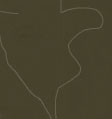Bison Wallow Beginnings
There are three possible reasons for this area of the tall grass prairie being referred to as the ‘bison wallow’. In short: 1) bison coming to the area would roll on the ground to discard their fur and burrs, causing depressions in the soil where water would eventually collect; 2) the bedrock in the area is unstable due to its composition of limestone (old seashells and fossils), which breaks down with water; 3) large deposits of debris were left in the Agassiz' wake, where the last pieces of ice melted were surrounded by higher deposits, causing the low spot on the land.
Whatever the reason for the uniqueness of these small ‘potholes’, they are important low areas that fill with water in the spring, creating small wetlands where small mammals, including deer and fox, can drink, and where amphibians such as frogs and garter snakes can begin new lifecycles. Without these areas of water, many animals would have difficulties finding water at particularly dry times of the year.
 previous virtual hike
previous virtual hike
